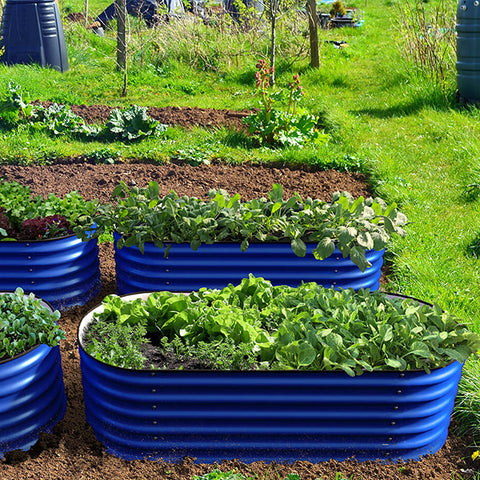Tips from Olle Garden Bed: Myth of Watering Gardens, Debunked
From a water conservation perspective, watering garden beds from above is not the most efficient method, but sometimes it is necessary.
During the hottest times of summer, making the most of every drop of water becomes especially crucial. With so much information available, distinguishing facts from fiction can be a challenge. Here are five common misconceptions about watering:

Fallacy: Plants need 1 inch of water per week
While the "one inch per week" recommendation is often cited as a rule of thumb, the fact is that plant water needs vary widely. Seedlings and newly transplanted young plants have limited root systems and require continuous water supply, so they might need watering daily in sunny or hot weather. On the other hand, mature trees and shrubs may only need supplemental watering during prolonged droughts due to their extensive root systems. The amount of water a plant needs depends on various factors, including plant type, growth stage, soil type, weather, and time of year.
The best approach for watering most plants is to saturate the entire root zone with sufficient water and then let the soil dry out slightly before watering again. Slow watering allows the soil to absorb the water, rather than running off—a soaker hose is ideal for this purpose. Avoid light, daily sprinkling, as it encourages shallow root growth and quick evaporation.
Instead of relying on a fixed schedule, water plants when they need it. (Besides, how do you know when you've applied one inch of water with a soaker hose?)
Misconception: Wilting is a sign of needing water
Yes, wilting is a sign that leaves haven't received enough water, but it doesn't necessarily mean the soil is dry. Anything that damages the plant's root system can cause wilting.
Plant roots need a balanced supply of air and water. Too little water can cause the roots to die from lack of moisture. Too much water leaves spaces between soil particles filled with water, suffocating the roots. Both situations decrease the plant's ability to transport sufficient water to its stems and leaves, resulting in wilting. Root diseases, physical damage (such as disrupting the roots while hoeing), and soil-borne insects can also harm the roots, preventing them from supplying water to the plant fully.
Stem damage can also lead to wilting. Some diseases and insects (especially borers) hinder water distribution throughout the plant, causing partial or complete wilting.
The only way to determine if wilting is caused by lack of water is to check the soil moisture.
The soil is moist, yet this hydrangea wilts in hot weather.
Even on the sunniest days, water droplets won't scorch tree leaves.
Misconception: Watering in the sunshine scorches leaves
Avoiding watering the garden in bright afternoon sunlight is for a good reason, but scorching leaves is not one of them. The myth that water droplets act as magnifying glasses and burn plant leaves has no factual basis; anyone who has seen the sun come out after a summer shower knows that water quickly evaporates.
Leaf damage can be caused by various factors, including:
Excessive or insufficient soil moisture
Improperly diluted synthetic fertilizers causing fertilizer burn
Insect or disease issues
Weather conditions like wind or frost
So, is it okay to water plants in the sun? While it's best to avoid watering in bright afternoon sunlight to minimize water evaporation, there's no need to worry about leaves getting scorched.

Misconception: Avoid watering from above with a sprinkler
Generally, it's better to water the soil directly around the plants instead of using a sprinkler. This reduces water loss due to evaporation, especially on hot, sunny days. Keeping tree leaves dry also minimizes disease issues.
However, there are times when overhead showering is necessary. In dry and windy weather, a thin layer of dust can accumulate on the leaves, reducing the plant's ability to perform photosynthesis effectively. Some insects, including aphids and spider mites, can be controlled by simply rinsing the plants. Lastly, plants suffering from heat stress, even when their roots are moist, can benefit from a cold shower—the effect might not last long on sunny days, but it can provide some relief.
From a water conservation perspective, watering from above is not the most efficient method, but sometimes it is necessary.
Fallacy: Drought-tolerant plants don't need watering
Many young coneflowers and yarrows have perished because these "drought-tolerant" plants did not receive enough water during the establishment period and the first growing season.
When you plant something new, its roots are confined to the shape of the pot. Plants need continuous water supply during their first growth phase.
